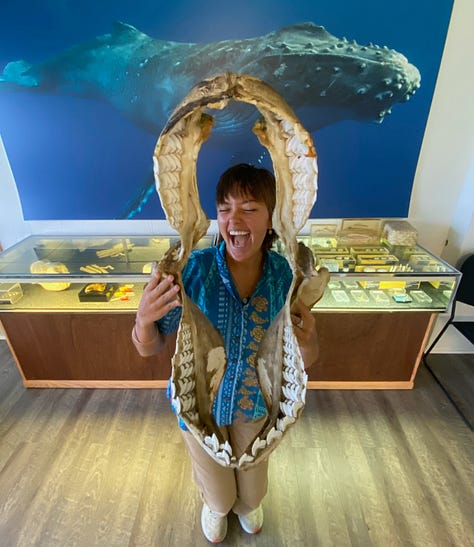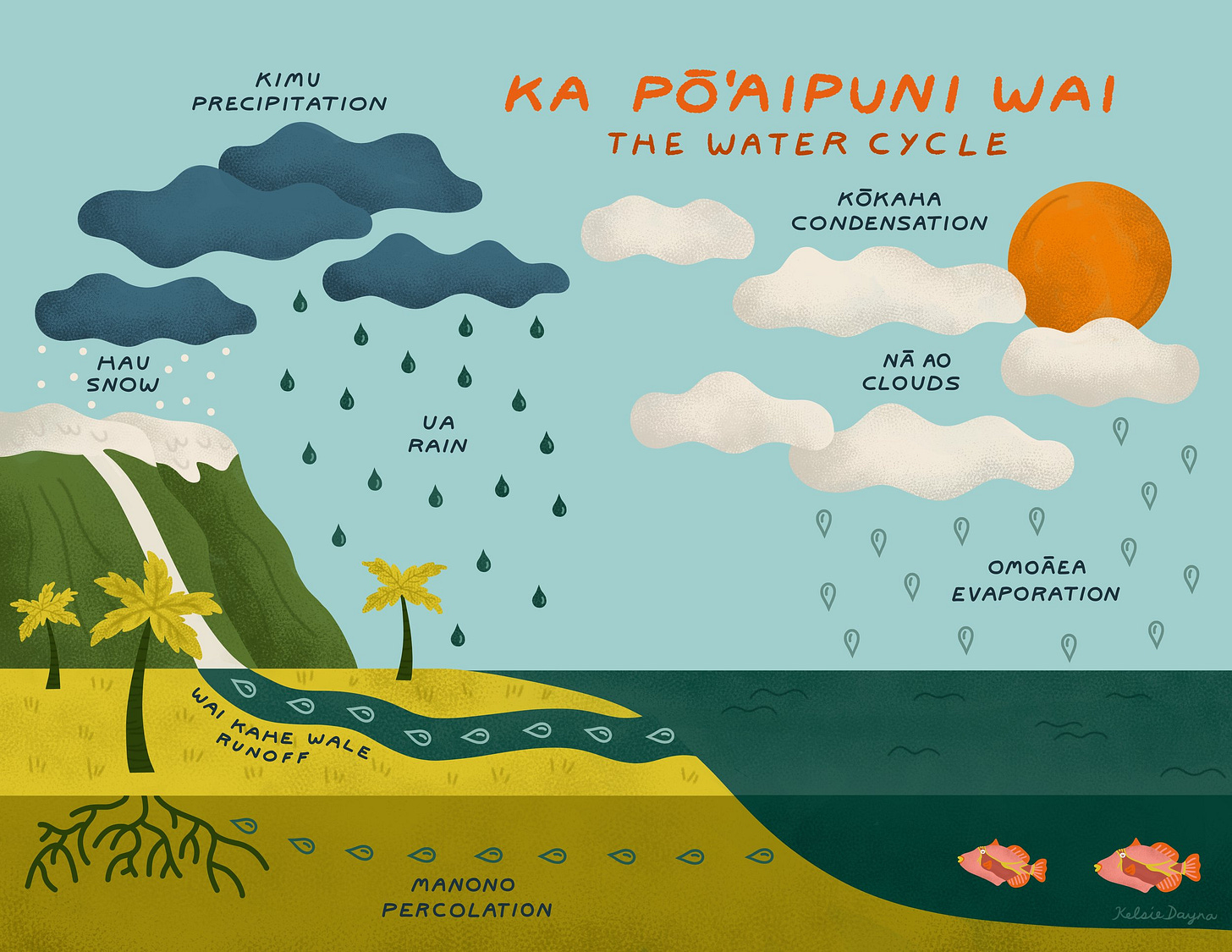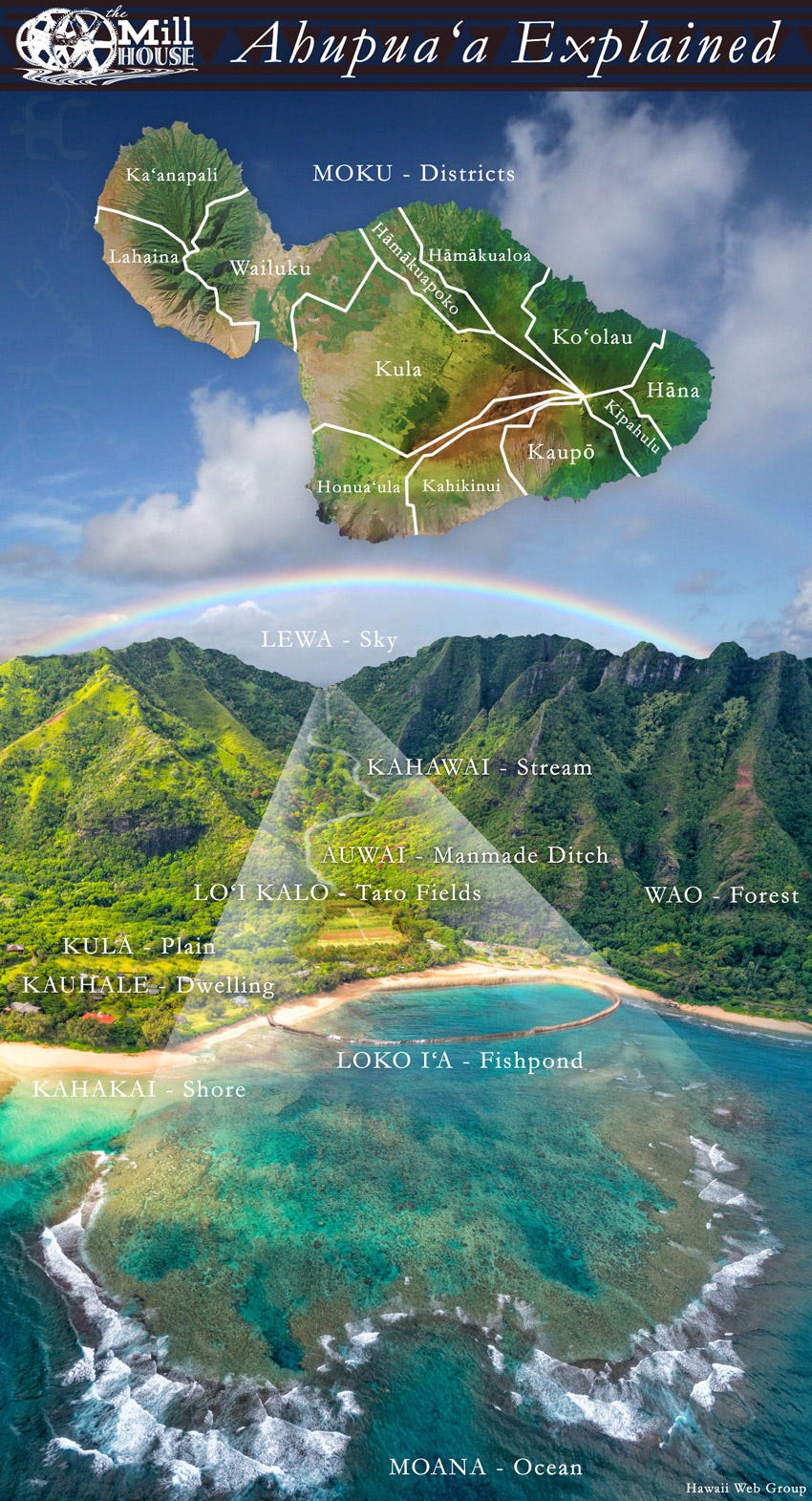Aloha mai, Keili here.
For those of you who don’t know, I work as an Educator as Sea Life Park (LMK if you need tickets, I got you). Basically, i’m a teacher to all students and visitors who come to the park. I get to talk about our animals, conservation and sustainability.



The other day at work I was asked by a school to do a career talk….which I found humorous given that I still don’t know what I want to be when I grow up myself! So I got to talking about my academic and professional journey to a room full of 6th graders. It was pretty fun, I got to speak alongside reef specialists and veterinarians. As I got to talking with the students and started a dialogue with them, we got into what sustainability means.
I was surprised to find that very few of them knew the word. I told them to think of the water cycle - is any water wasted or forgotten?
When I think of creating a more sustainable system, this is what I think of. Imitating the water cycle. It is one of the most basic and necessary systems that happens on earth. One of the first lessons in Biology class. Nothing is wasted, rather hydrogen and oxygen is forever reincarnated into another useful form to be used by millions of systems here on earth. Relating it back to sustainability in real world, a teacher mentioned new materials using plastics (a seemingly single use material) to create board shorts, bags, etc. We need to see more businesses take risks to incorporate single use waste in more ways to reduce our impact and further imitate the water cycle…. Luckily there is plenty creeping and crawling out of their innovation!
Image from LEILEHUA LANZILOTTI
In Hawaiʻi we are lucky to have one of the most efficient and resourceful system based on the water cycle - the ahupuaʻa system. An ahupuaʻa is a large traditional socioeconomic, geologic, and climatic subdivision of land. Breaking down the verbiage, “ahu” translates to heap (of stone) and “puaʻa” is a pig. Boundaries for ahupuaʻa were traditionally large heaps of stones used by the people to make offerings (sometimes pig). Some oral history relates that the Oʻahu chief of the time, Māʻilikūkahi, took control of the land and subdivided it into ahupuaʻa in the early 13th century. The solution was proposed to bring order, resolve food supply and land right disputes amongst aliʻi (chiefs).
Image from watershed project
Each Ahupuaʻan included lowland mala (gardens) and upland forests. Imagine slicing the island up in pie-like slivers starting at the peak of a mountain and coming down to the ocean. Using the natural flow of water from Mauna (mountains) to makai (the ocean), the ahupuaʻa system contained both irrigation and rain-fed systems like kalo (taro).
Of course, the areas still had rules and regulations for fishing, managing land, and ensuring everyone resided in their ahupuaʻa boundaries. It was established based on the values that everyone deserves to have access to all of these stages of war (water) from the fresh water at the mountain tops, to the turkey stream feeding the ocean. All are deserving of this resource, and all are responsible for itʻs upkeep and preservation. It solved problems of exploitation, poverty, homelessness and starvation.
Image from the Pacific Whale Foundation
Under this system Hawaiian people flourished for generations. Living with more food than they needed, much was shared and traded across ahupuaʻa where one region had more of one specific food source or resource than another side of the island.
To sustain life on earth in an ethical way it is becoming obvious that we need to reshape, rethink, and relearn the way we do things. True wealth does not lie in the capitalistic way of thinking today - we need to look to the past and find inspiration in systems similar to ahupuaʻa. Find ways to follow the patterns laid out for us by nature and instead of exploiting them, we need to feed and nurture them.
Chris often says the ʻōlelo noʻeau; He waʻa he moku, he moku he waʻa, A canoe is an island, an island is a canoe. Bringing this ahupuaʻa format onto a canoe or into any habitat is the exact same. When we have strong values on our resources and understand the complexity of the various cycles it must undertake, we can create a true sustainable world! So I would like to challenge you to start an ahupuaʻa system in your own way, whatever that may be - maybe itʻs your canoe, kitchen, your business, your home.
-Keili
Mahalo to everyone who works hard against the societal norms to create more ʻili ahupuaʻa for the next generation. Thank you to all of our friends and family who have helped us along our own journey especially my mother, Illa McEvilly, to whom my posts are always dedicated.








